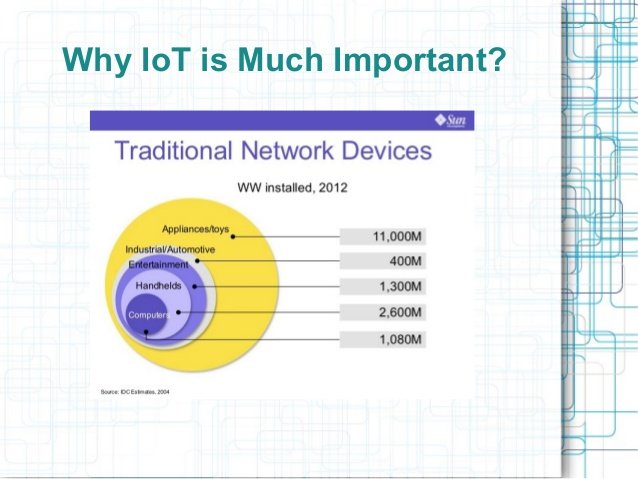Internet of Things (IoT)

The Internet of Things is the concept of everyday objects – from industrial machines to wearable devices – using built-in sensors to gather data and take action on that data across a network. So it’s a building that uses sensors to automatically adjust heating and lighting. Or production equipment alerting maintenance personnel to an impending failure. Simply put, the Internet of Things is the future of technology that can make our lives more efficient.
History of the Internet of Things
We’ve been fascinated with gadgets that function on a grander scale for decades (think spy movie-type stuff) – but it’s only been in the past several years that we’ve seen the IoT’s true potential. The concept evolved as wireless Internet became more pervasive, embedded sensors grew in sophistication and people began understanding that technology could be a personal tool as well as a professional one.
The term “Internet of Things” was coined in the late 1990s by entrepreneur Kevin Ashton. Ashton, who’s one of the founders of the Auto-ID Center at MIT, was part of a team that discovered how to link objects to the Internet through an RFID tag. He said he first used the phrase “Internet of Things” in a presentation he made in 1999 – and the term has stuck around ever since.
Why is the Internet of Things important?

You might be surprised to learn how many things are connected to the Internet, and how much economic benefit we can derive from analyzing the resulting data streams. Here are some examples of the impact the IoT has on industries:
Intelligent transport solutions speed up traffic flows, reduce fuel consumption, prioritize vehicle repair schedules and save lives.
Smart electric grids more efficiently connect renewable resources, improve system reliability and charge customers based on smaller usage increments.
Machine monitoring sensors diagnose – and predict – pending maintenance issues, near-term part stockouts, and even prioritize maintenance crew schedules for repair equipment and regional needs.
Data-driven systems are being built into the infrastructure of "smart cities," making it easier for municipalities to run waste management, law enforcement and other programs more efficiently.
But also consider the IoT on a more personal level. Connected devices are making their way from business and industry to the mass market. Consider these possibilities:
You’re low on milk. When you’re on your way home from work, you get an alert from your refrigerator reminding you to stop by the store.
Your home security system, which already enables you to remotely control your locks and thermostats, can cool down your home and open your windows, based on your preferences.
Nice info shared
Posted using Partiko Android
thanks :)
Congratulations @mrhacker1024! You have completed the following achievement on the Steem blockchain and have been rewarded with new badge(s) :
Click on the badge to view your Board of Honor.
If you no longer want to receive notifications, reply to this comment with the word
STOP